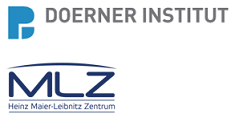Speaker
Description
The present work focuses on the archaeometric investigation of late-imperial Roman gold coins (solidi), issued by different imperial mints from pars Orientis and Occidentis and dated to about 402-472 CE. The examined coins are part of 1000 solidi of the “Treasure of Como”, a recent astounding discovery of precious and unique archaeological findings in Northern Italy [1].
The elemental fingerprint of archaeological coins can be related to the mints of origin and the manufacturing processes. Therefore, elemental analysis coupled with statistics can provide valuable insight and a better understanding of economic trades and coin diffusion [2].
Within the project “GOLD Como-treasure INterdisciplinary Study” (GOLD COINS), a selection of solidi with proven attributions were characterised by a multi-scale approach and totally non-invasive procedures based on the Energy Dispersive X-ray fluorescence (ED-XRF).
In particular, the first diagnostic campaign was performed on around fifty gold coins with an ED-XRF portable (pXRF) spectrometer. Then, the elemental abundance patterns of nine selected solidi were traced also by in-vacuum synchrotron-based X-ray fluorescence (SR-XRF) at the XRF beamline of the Elettra Synchrotron in Trieste (Italy).
Here, the potential and limits of XRF by portable instrumentation and synchrotron source are illustrated. Moreover, the comparison and integration of pXRF and SR-XRF data for quantitative and statistical analysis are discussed. Indeed, in this case study, preliminary quantitative evaluations of the highly pure gold coins were possible also by pXRF because of the absence of corrosion patinae, and the limited possibility of Cu depletion phenomena [3, 4].
In the first diagnostic phase, well-designed pXRF measurements were performed by exploiting the advantage of relatively fast and in situ material characterization. Quantitative considerations were carried out by reference alloy materials (Au/Ag and Au/Ag/Cu) and fundamental parameters modalities. This analytical step involved the determination of the main alloying (Au, Cu, Ag) and minor elements (Sn, Fe, Sb). Therefore, it provided the first clues on compositional differences and different typological clustering of the solidi.
Then, the access to a high-brightness synchrotron source in combination with pioneering experimental approaches allowed us to enhance the data statistics and to lower the detection limits (LOD) of trace elements like Pt, Pd, Hg, and Bi, despite the high Au-containing matrix (Au>98% in weight). Therefore, quantitative and statistical considerations related to the attribution and provenance of the solidi can be carried out in-depth by evaluating specific trace elements. In addition, regions of interest of the solidi were mapped with high spatial resolution, high counting values and high elementary distribution statistics. The possibility of collecting high-quality elemental maps by synchrotron source allowed us to correlate the Fe and Pt distributions to the manufacturing process of the flans used before the minting and the possible gold provenance, respectively.
Thus, this work proposes a non-invasive and multi-scale approach based on the integration of XRF data by portable instruments and high-brightness synchrotron sources. The present research could be fundamental for further classification and provenance studies of late Roman gold coins.
References
[1] G. Facchinetti, “Il Tesoro di Como. Via Diaz 2018”, Notiziario del Portale Numismatico dello Stato, n. 16, 2022.
[2] M. F. Guerra, T. Calligaro, “Gold cultural heritage objects: a review of studies of provenance and manufacturing technologies”, Measurement Science and Technology, 14 (9), 2003, 1527.
[3] J. Corsi, A. Lo Giudice, A. Re, A. Agostino, F. Barello, “Potentialities of X-ray fluorescence analysis in numismatics: the case study of pre-Roman coins from Cisalpine Gaul”, Archaeological and Anthropological Sciences, 10 (2), 2016, 431-438.
[4] E. S. Blakelock, “Never judge a gold object by its surface analysis: a study of surface phenomena in a selection of gold objects from the Staffordshire hoard”, Archaeometry, 58 (6) 2015, 912-929.

